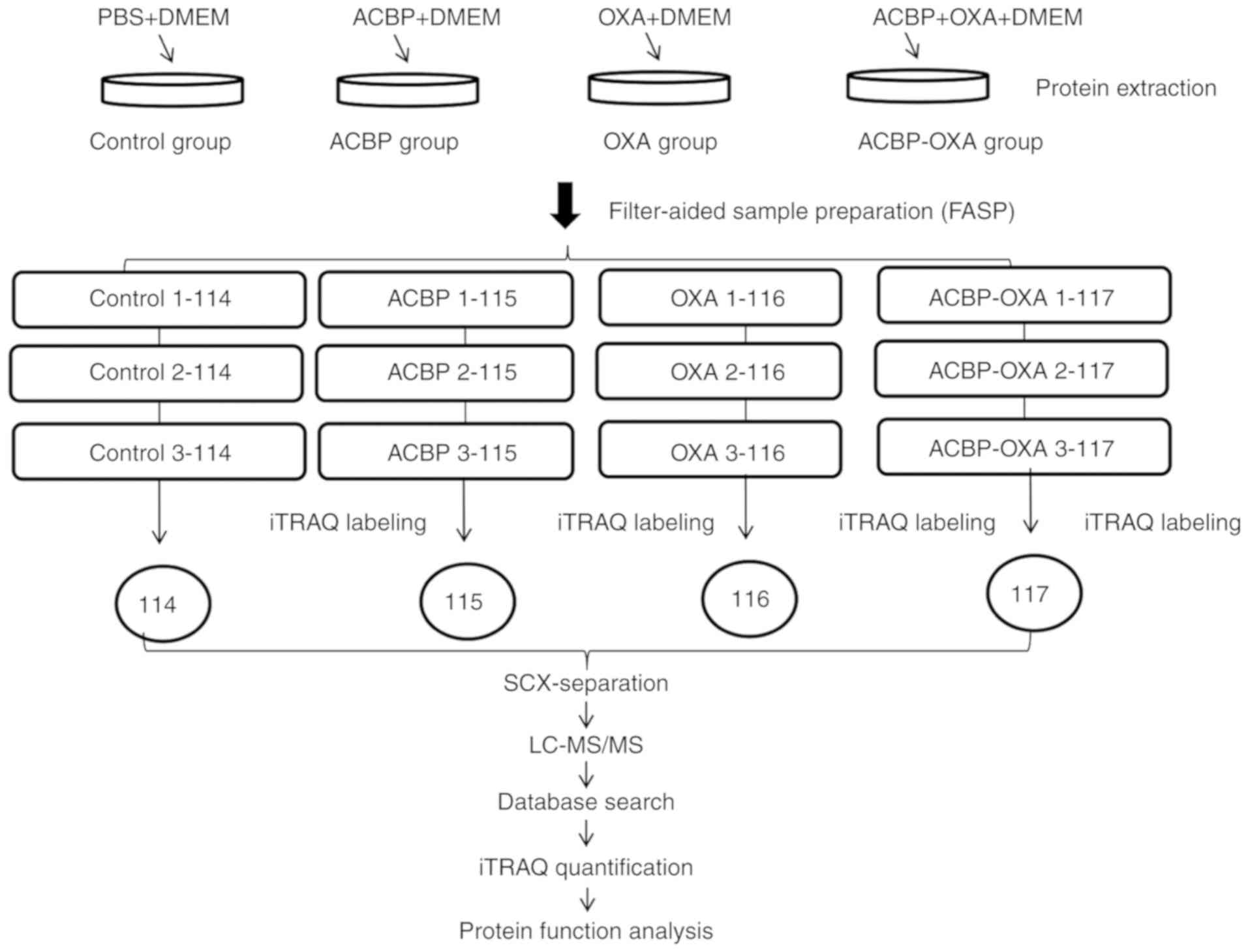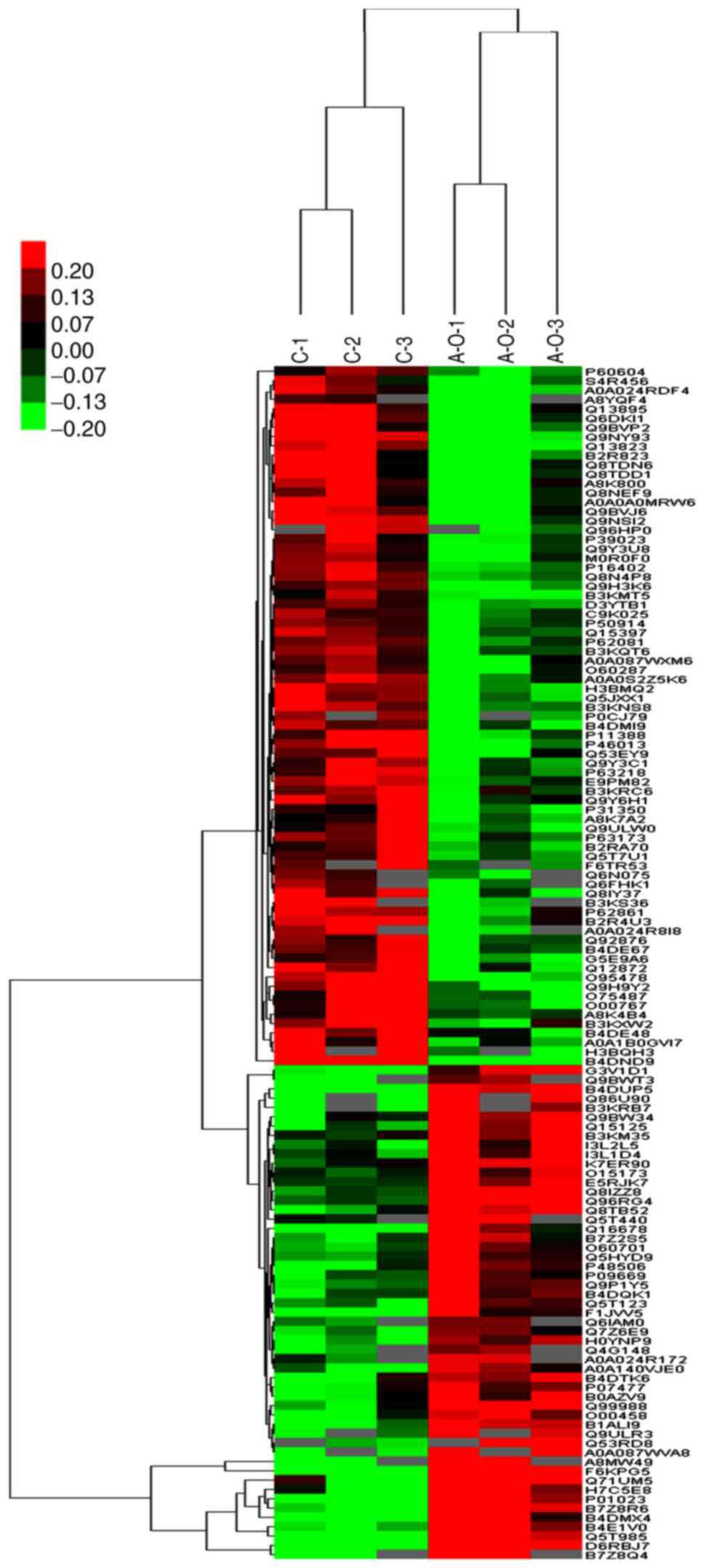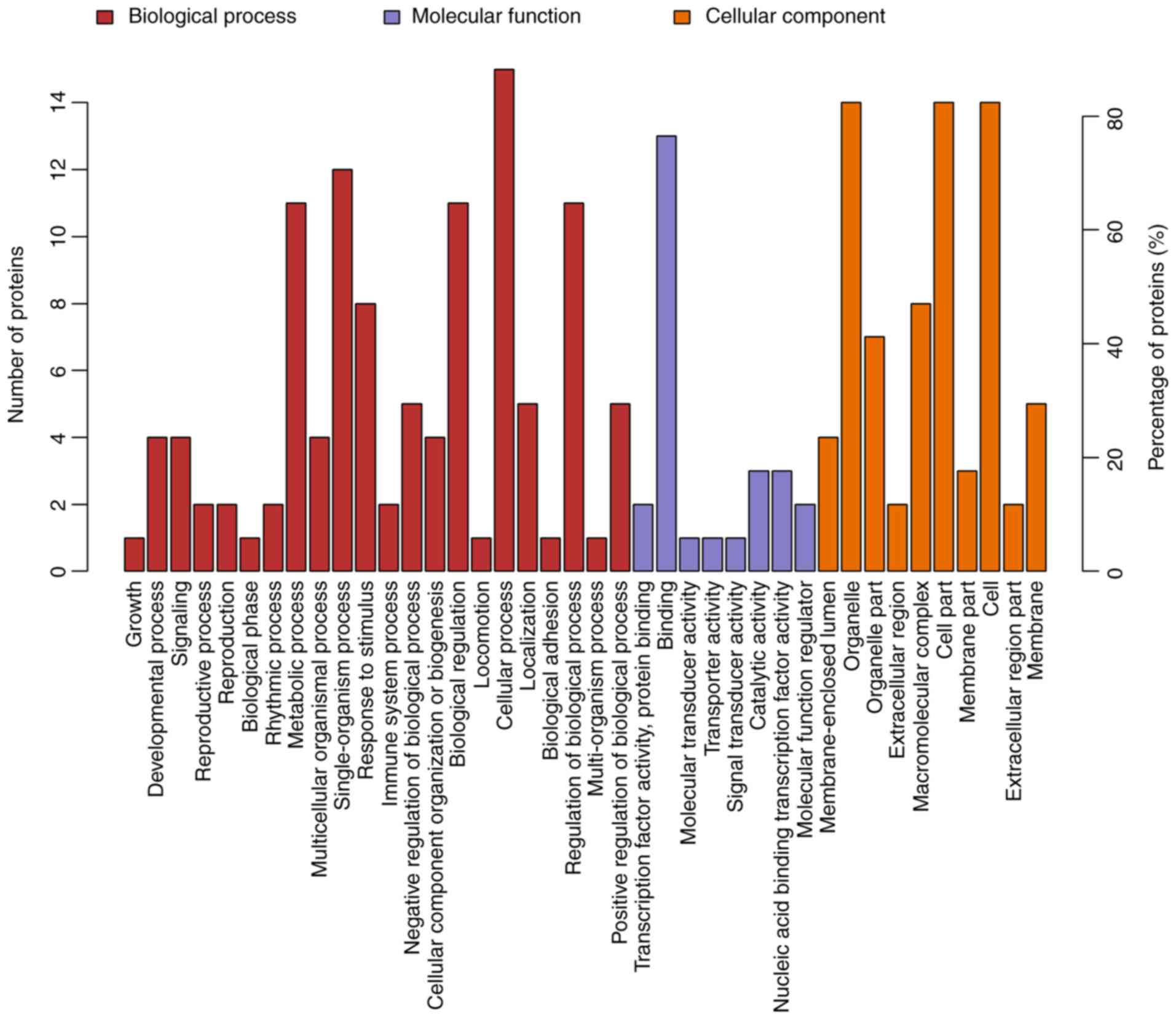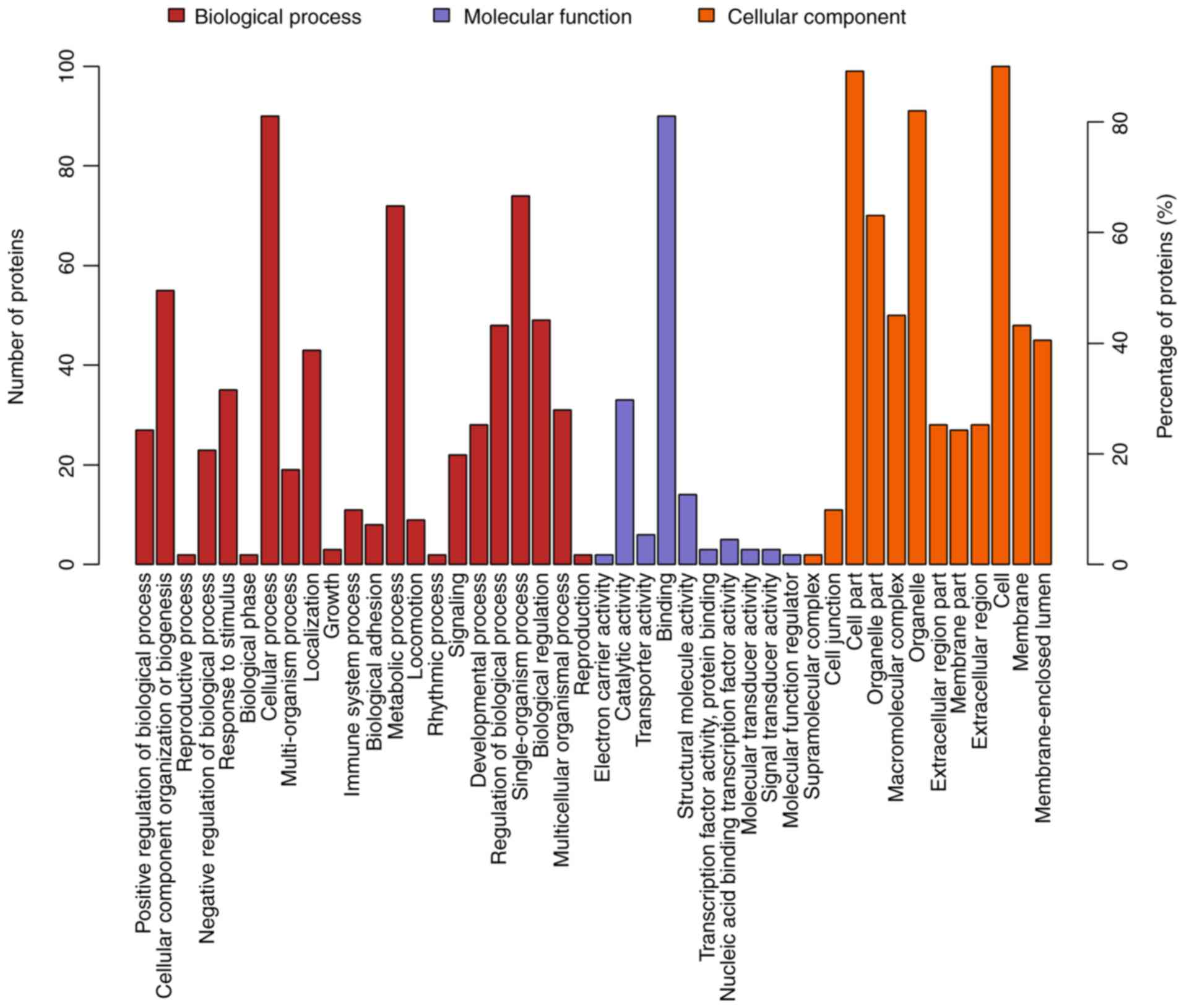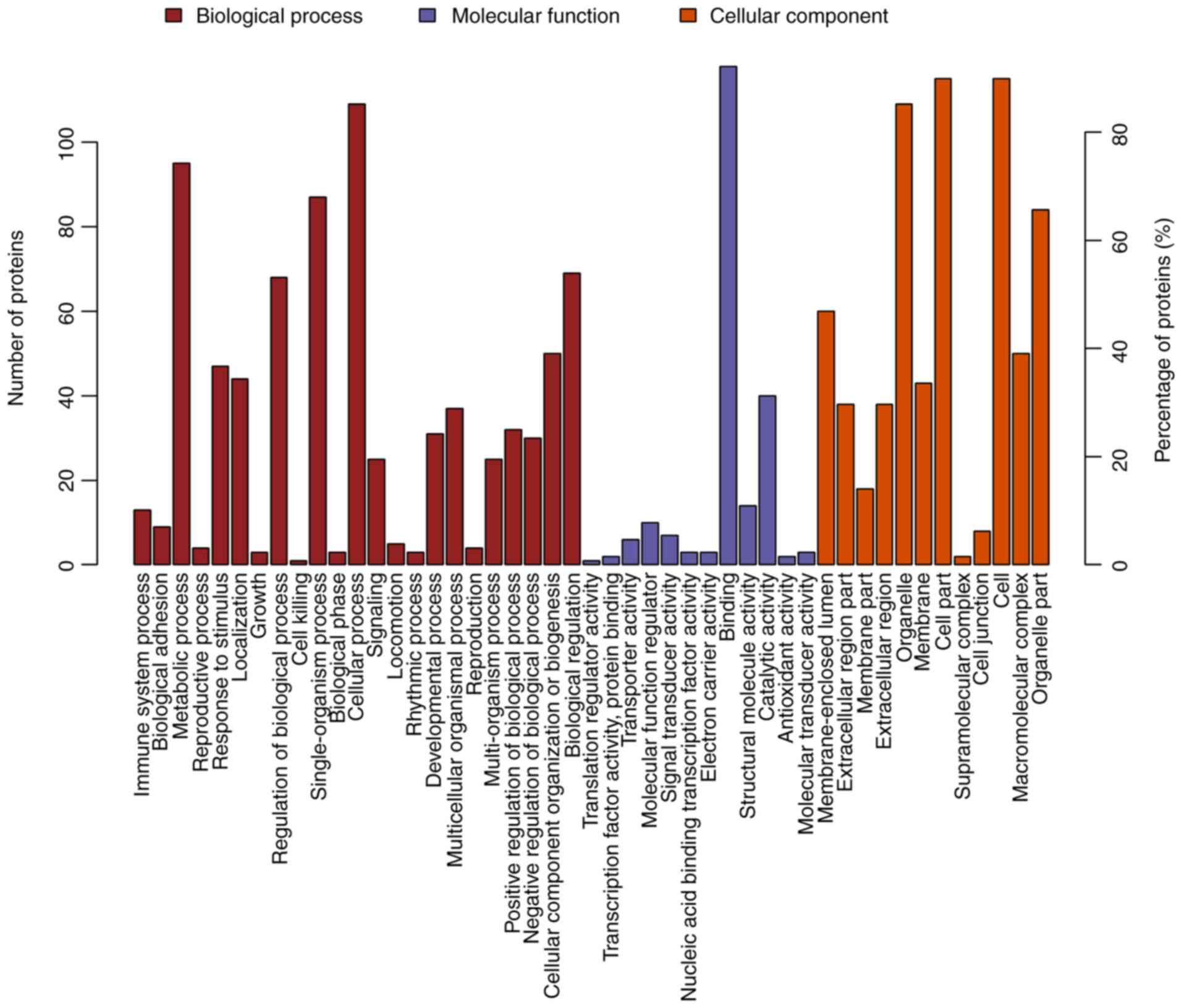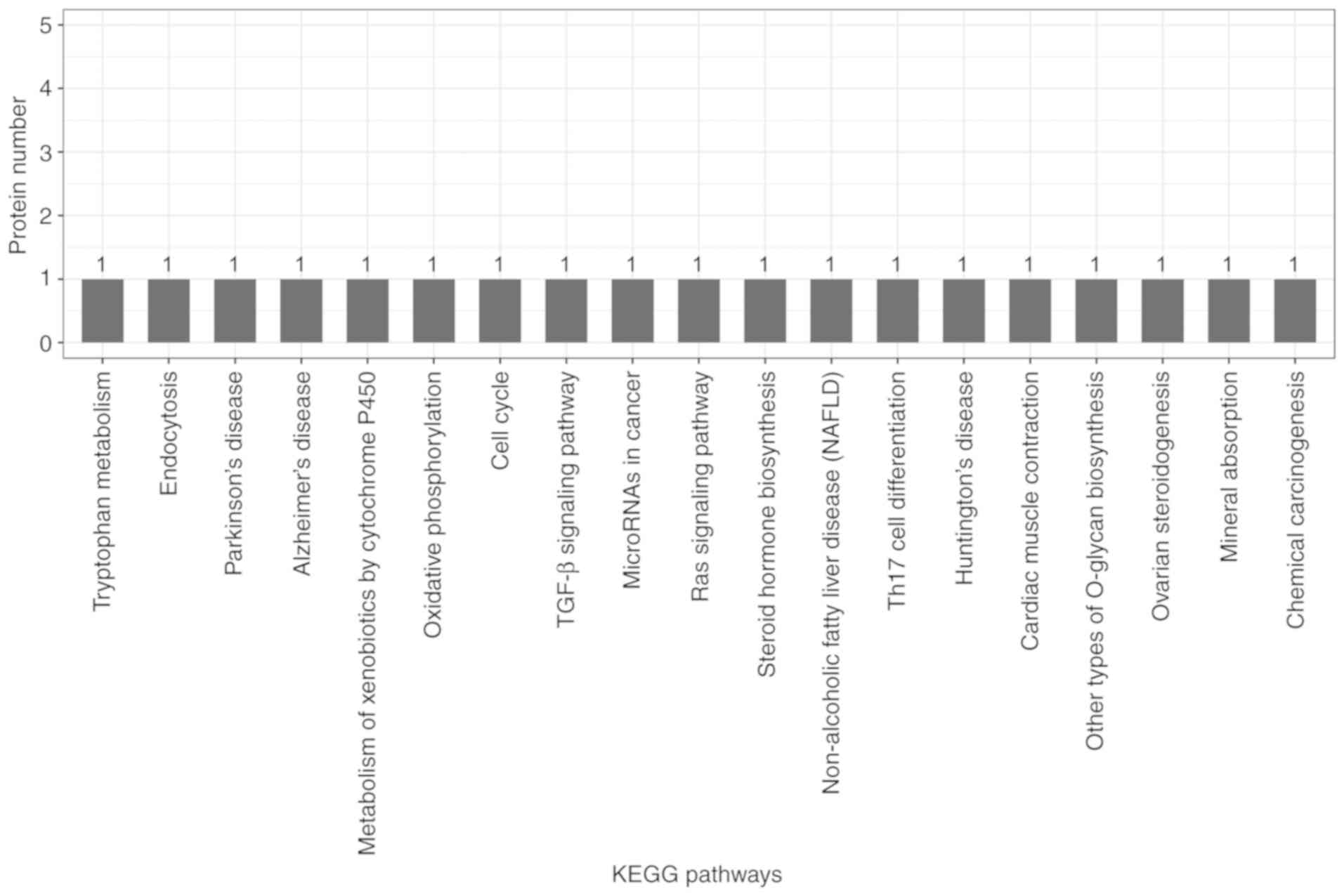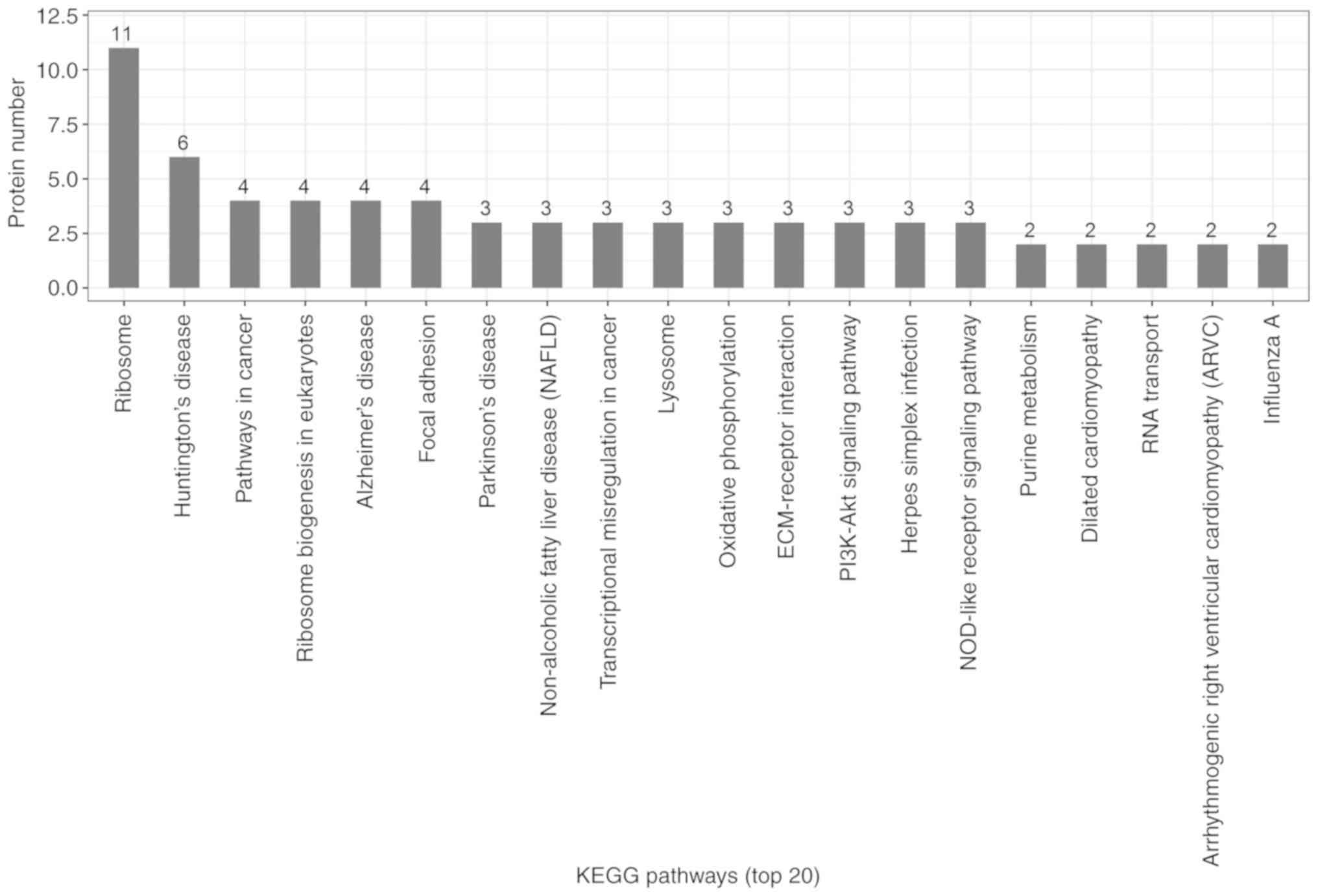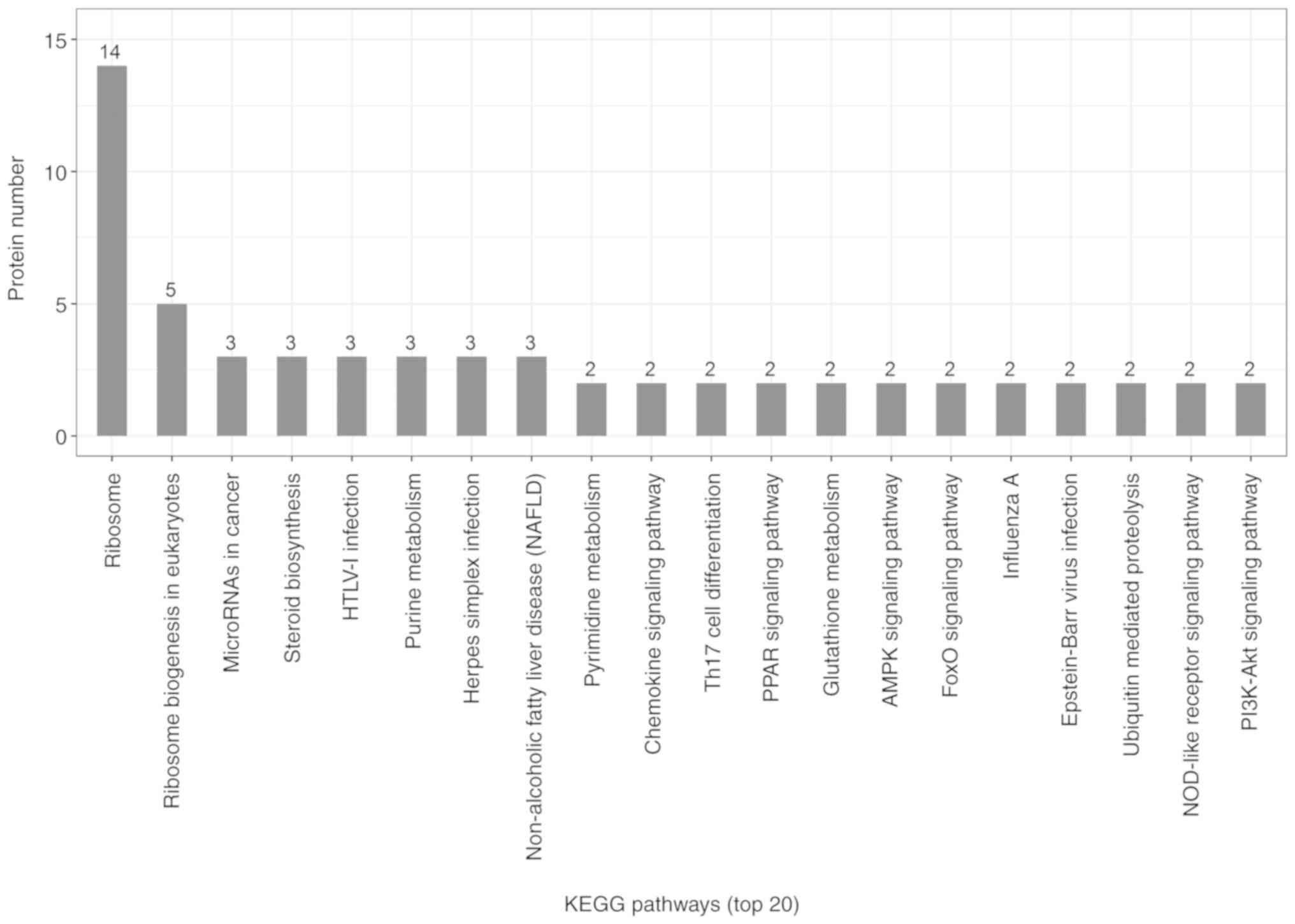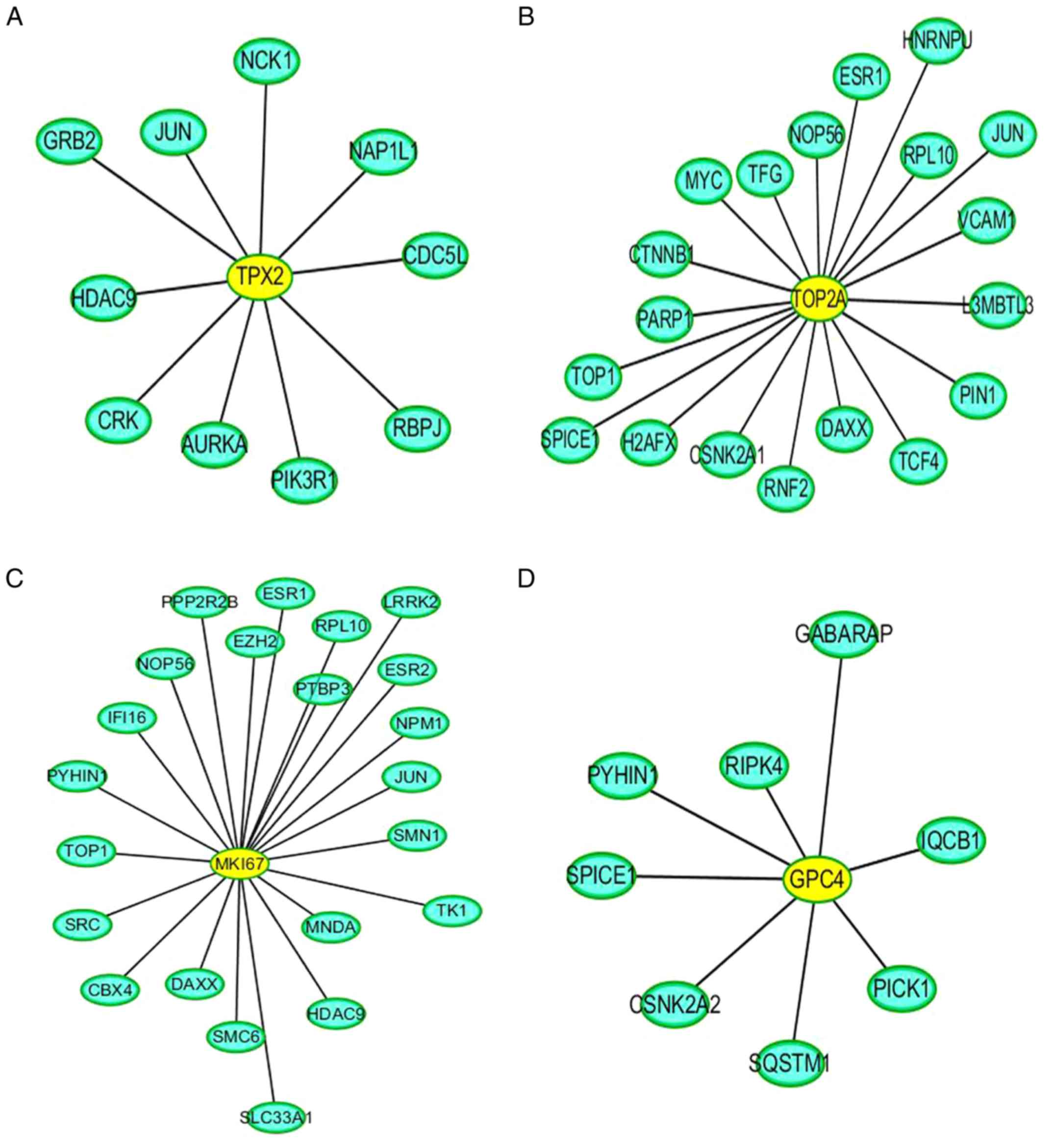|
1
|
Ferro A, Peleteiro B, Malvezzi M, Bosetti
C, Bertuccio P, Levi F, Negri E, La Vecchia C and Lunet N:
Worldwide trends in gastric cancer mortality (1980–2011), with
predictions to 2015, and incidence by subtype. Eur J Cancer.
50:1330–1344. 2014. View Article : Google Scholar : PubMed/NCBI
|
|
2
|
Karimi P, Islami F, Anandasabapathy S,
Freedman ND and Kamangar F: Gastric cancer: Descriptive
epidemiology, risk factors, screening, and prevention. Cancer
Epidemiol Biomarkers Prev. 23:700–713. 2014. View Article : Google Scholar : PubMed/NCBI
|
|
3
|
Ferlay J, Soerjomataram I, Dikshit R, Eser
S, Mathers C, Rebelo M, Parkin DM, Forman D and Bray F: Cancer
incidence and mortality worldwide: Sources, methods and major
patterns in GLOBOCAN 2012. Int J Cancer. 136:E359–E386. 2015.
View Article : Google Scholar : PubMed/NCBI
|
|
4
|
Suzuki S, Gotoda T, Hatta W, Oyama T,
Kawata N, Takahashi A, Yoshifuku Y, Hoteya S, Nakagawa M, Hirano M,
et al: Survival benefit of additional surgery after non-curative
endoscopic submucosal dissection for early gastric cancer: A
propensity score matching analysis. Ann Surg Oncol. 24:3353–3360.
2017. View Article : Google Scholar : PubMed/NCBI
|
|
5
|
Ohnita K, Isomoto H, Shikuwa S, Yajima H,
Minami H, Matsushima K, Akazawa Y, Yamaguchi N, Fukuda E, Nishiyama
H, et al: Early and long-term outcomes of endoscopic submucosal
dissection for early gastric cancer in a large patient series. Exp
Ther Med. 7:594–598. 2014. View Article : Google Scholar : PubMed/NCBI
|
|
6
|
Di Caro S, Tao H, Grillo A, Franceschi F,
Elia C, Zocco MA, Gasbarrini G, Sepulveda AR and Gasbarrini A:
Bacillus clausii effect on gene expression pattern in small
bowel mucosa using DNA microarray analysis. Eur J Gastroenterol
Hepatol. 17:951–960. 2005. View Article : Google Scholar : PubMed/NCBI
|
|
7
|
Ray B, Gupta B and Mehrotra R: Binding of
platinum derivative, oxaliplatin to deoxyribonucleic acid:
Structural insight into antitumor action. J Biomol Struct Dyn.
37:3838–3847. 2019. View Article : Google Scholar : PubMed/NCBI
|
|
8
|
Drott J, Starkhammar H, Kjellgren K and
Berterö C: Neurotoxic side effects early in the oxaliplatin
treatment period in patients with colorectal cancer. Oncol Nurs
Forum. 45:690–697. 2018.PubMed/NCBI
|
|
9
|
Su LY, Xin HY, Liu YL, Zhang JL, Xin HW
and Su XL: Anticancer bioactive peptide (ACBP) inhibits gastric
cancer cells by upregulating growth arrest and DNA damage-inducible
gene 45A (GADD45A). Tumour Biol. 35:10051–10056. 2014. View Article : Google Scholar : PubMed/NCBI
|
|
10
|
Zhao YY, Peng SD and Su XL: Effects of
anti-cancer bioactive peptide on cell cycle in human nasopharyngeal
carcinoma strain CNE. Zhonghua Er Bi Yan Hou Tou Jing Wai Ke Za
Zhi. 41:607–611. 2006.(In Chinese). PubMed/NCBI
|
|
11
|
Xing Z, Yu L, Li X and Su X: Anticancer
bioactive peptide-3 inhibits human gastric cancer growth by
targeting miR-338-5p. Cell Biosci. 6:532016. View Article : Google Scholar : PubMed/NCBI
|
|
12
|
Su X, Dong C, Zhang J, Su L, Wang X, Cui H
and Chen Z: Combination therapy of anti-cancer bioactive peptide
with Cisplatin decreases chemotherapy dosing and toxicity to
improve the quality of life in xenograft nude mice bearing human
gastric cancer. Cell Biosci. 4:72014. View Article : Google Scholar : PubMed/NCBI
|
|
13
|
Li X, Wu H, Ouyang X, Zhang B and Su X:
New bioactive peptide reduces the toxicity of chemotherapy drugs
and increases drug sensitivity. Oncol Rep. 38:129–140. 2017.
View Article : Google Scholar : PubMed/NCBI
|
|
14
|
Su L, Xu G, Shen J, Tuo Y, Zhang X, Jia S,
Chen Z and Su X: Anticancer bioactive peptide suppresses human
gastric cancer growth through modulation of apoptosis and the cell
cycle. Oncol Rep. 23:3–9. 2010.PubMed/NCBI
|
|
15
|
Moulder R, Bhosale SD, Goodlett DR and
Lahesmaa R: Analysis of the plasma proteome using iTRAQ and
TMT-based Isobaric labeling. Mass Spectrom Rev. 37:583–606. 2018.
View Article : Google Scholar : PubMed/NCBI
|
|
16
|
Zhang P, Dai Y, Xiong J, Zhu S, Zhao M,
Ding S and Li J: iTRAQ-based differential proteomics analysis of
the brains in a rat model of delayedcarbon monoxide encephalopathy.
Brain Res Bull. 137:329–337. 2018. View Article : Google Scholar : PubMed/NCBI
|
|
17
|
Li Y, Wang Z, Zhao Z and Cui Y:
iTRAQ-based proteome profiling of hyposaline responses in zygotes
of the Pacific oyster Crassostrea gigas. Comp Biochem Physiol Part
D Genomics Proteomics. 30:14–24. 2019. View Article : Google Scholar : PubMed/NCBI
|
|
18
|
Takaishi S, Okumura T, Tu S, Wang SS,
Shibata W, Vigneshwaran R, Gordon SA, Shimada Y and Wang TC:
Identification of gastric cancer stem cells using the cell surface
marker CD44. Stem Cells. 27:1006–1020. 2009. View Article : Google Scholar : PubMed/NCBI
|
|
19
|
Zhang P, Zhu S, Zhao M, Zhao P, Zhao H,
Deng J and Li J: Identification of plasma biomarkers for diffuse
axonal injury in rats by iTRAQ-coupled LC-MS/MS and bioinformatics
analysis. Brain Res Bull. 142:224–232. 2018. View Article : Google Scholar : PubMed/NCBI
|
|
20
|
Han W, Xiao R, Zhang C, Suyila Q, Li X and
Su X: Selecting lncRNAs in gastric cancer cells for directed
therapy with bioactive peptides and chemotherapy drugs. Oncotarget.
8:86082–86097. 2017. View Article : Google Scholar : PubMed/NCBI
|
|
21
|
Bhusal P, Rahiri JL, Sua B, McDonald JE,
Bansal M, Hanning S, Sharma M, Chandramouli K, Harrison J, Procter
G, et al: Comparing human peritoneal fluid and phosphate-buffered
saline for drug delivery: Do we need bio-relevant media? Drug Deliv
Transl Res. 8:708–718. 2018. View Article : Google Scholar : PubMed/NCBI
|
|
22
|
Thorat AA and Suryanarayanan R:
Characterization of phosphate buffered saline (PBS) in frozen State
and after Freeze-drying. Pharm Res. 36:982019. View Article : Google Scholar : PubMed/NCBI
|
|
23
|
Yu L, Yang L, An W and Su X: Anticancer
bioactive peptide-3 inhibits human gastric cancer growth by
suppressing gastric cancer stem cells. J Cell Biochem. 115:697–711.
2014. View Article : Google Scholar : PubMed/NCBI
|
|
24
|
Wisniewski JR, Zougman A, Nagaraj N and
Mann M: Universal sample preparation method for proteome analysis.
Nat Methods. 6:359–362. 2009. View Article : Google Scholar : PubMed/NCBI
|
|
25
|
Götz S, García-Gómez JM, Terol J, Williams
TD, Nagaraj SH, Nueda MJ, Robles M, Talón M, Dopazo J and Conesa A:
High-throughput functional annotation and data mining with the
Blast2GO suite. Nucleic Acids Res. 36:3420–3435. 2008. View Article : Google Scholar : PubMed/NCBI
|
|
26
|
Peterson AC, Russell JD, Bailey DJ,
Westphall MS and Coon JJ: Parallel reaction monitoring for high
resolution and high mass accuracy quantitative, targeted
proteomics. Mol Cell Proteomics. 11:1475–1488. 2012. View Article : Google Scholar : PubMed/NCBI
|
|
27
|
MacLean B, Tomazela DM, Shulman N,
Chambers M, Finney GL, Frewen B, Kern R, Tabb DL, Liebler DC and
MacCoss MJ: Skyline: An open source document editor for creating
and analyzing targeted proteomics experiments. Bioinformatics.
26:966–968. 2010. View Article : Google Scholar : PubMed/NCBI
|
|
28
|
Ito Y, Yoshikawa T, Fujiwara M, Kojima H,
Matsui T, Mochizuki Y, Cho H, Aoyama T, Ito S, Misawa K, et al:
Quality of life and nutritional consequences after aboral pouch
reconstruction following total gastrectomy for gastric cancer:
Randomized controlled trial CCG1101. Gastric Cancer. 19:977–985.
2016. View Article : Google Scholar : PubMed/NCBI
|
|
29
|
Kalfusova A, Hilska I, Krskova L, Kalinova
M, Linke Z and Kodet R: Gastrointestinal stromal
tumors-quantitative detection of the Ki-67, TPX2, TOP2A, and hTERT
telomerase subunit mRNA levels to determine proliferation activity
and a potential for aggressive biological behavior. Neoplasma.
63:484–492. 2016. View Article : Google Scholar : PubMed/NCBI
|
|
30
|
Villanueva MT: Combination therapy: Update
on gastric cancer in East Asia. Nat Rev Clin Oncol. 8:6902011.
View Article : Google Scholar : PubMed/NCBI
|
|
31
|
Berretta M, Taibi R, Bearz A, La Mura N,
Berretta S, Tirelli U and Frustaci S: Dysphonia as an unusual toxic
event of oxaliplatin-based chemotherapy. J Chemother. 16:595–598.
2004. View Article : Google Scholar : PubMed/NCBI
|
|
32
|
Wadsworth P: Tpx2. Curr Biol.
25:R1156–R1158. 2015. View Article : Google Scholar : PubMed/NCBI
|
|
33
|
Neumayer G, Belzil C, Gruss OJ and Nguyen
MD: TPX2: Of spindle assembly, DNA damage response, and cancer.
Cell Mol Life Sci. 71:3027–3047. 2014. View Article : Google Scholar : PubMed/NCBI
|
|
34
|
Alfaro-Aco R and Petry S: How TPX2 helps
microtubules branch out. Cell Cycle. 16:1560–1561. 2017. View Article : Google Scholar : PubMed/NCBI
|
|
35
|
Lee SY, Kim EY, Kim KH and Lee KA:
Bcl2l10, a new Tpx2 binding partner, is a master regulator of
Aurora kinase A in mouse oocytes. Cell Cycle. 15:3296–3305. 2016.
View Article : Google Scholar : PubMed/NCBI
|
|
36
|
Garrido G and Vernos I: Non-centrosomal
TPX2-dependent regulation of the Aurora A Kinase: Functional
implications for healthy and pathological cell division. Front
Oncol. 6:882016. View Article : Google Scholar : PubMed/NCBI
|
|
37
|
Grover A, Singh R, Shandilya A, Priyandoko
D, Agrawal V, Bisaria VS, Wadhwa R, Kaul SC and Sundar D:
Ashwagandha derived withanone targets TPX2-Aurora A complex:
Computational and experimental evidence to its anticancer activity.
PLoS One. 7:e308902012. View Article : Google Scholar : PubMed/NCBI
|
|
38
|
Pascreau G, Eckerdt F, Lewellyn AL,
Prigent C and Maller JL: Phosphorylation of p53 is regulated by
TPX2-Aurora A in xenopus oocytes. J Biol Chem. 284:5497–5505. 2009.
View Article : Google Scholar : PubMed/NCBI
|
|
39
|
Liu Z, Guan C, Lu C, Liu Y, Ni R, Xiao M
and Bian Z: High NUSAP1 expression predicts poor prognosis in colon
cancer. Pathol Res Pract. 214:968–973. 2018. View Article : Google Scholar : PubMed/NCBI
|
|
40
|
Gordon CA, Gong X, Ganesh D and Brooks JD:
NUSAP1 promotes invasion and metastasis of prostate cancer.
Oncotarget. 8:29935–29950. 2017. View Article : Google Scholar : PubMed/NCBI
|
|
41
|
Han G, Wei Z, Cui H, Zhang W, Wei X, Lu Z
and Bai X: NUSAP1 gene silencing inhibits cell proliferation,
migration and invasion through inhibiting DNMT1 gene expression in
human colorectal cancer. Exp Cell Res. 367:216–221. 2018.
View Article : Google Scholar : PubMed/NCBI
|
|
42
|
Ye M, He Z, Dai W, Li Z, Chen X and Liu J:
A TOP2A-derived cancer panel drives cancer progression in papillary
renal cell carcinoma. Oncol Lett. 16:4169–4178. 2018.PubMed/NCBI
|
|
43
|
Engstrom MJ, Ytterhus B, Vatten LJ, Opdahl
S and Bofin AM: TOP2A gene copy number change in breast cancer. J
Clin Pathol. 67:420–425. 2014. View Article : Google Scholar : PubMed/NCBI
|
|
44
|
de Resende MF, Vieira S, Chinen LT,
Chiappelli F, da Fonseca FP, Guimarães GC, Soares FA, Neves I,
Pagotty S, Pellionisz PA, et al: Prognostication of prostate cancer
based on TOP2A protein and gene assessment: TOP2A in prostate
cancer. J Transl Med. 11:362013. View Article : Google Scholar : PubMed/NCBI
|
|
45
|
Zhang J, Yang YC, Zhu JS, Zhou Z and Chen
WX: Clinicopathologic characteristics of YES-associated protein 1
overexpression and its relationship to tumor biomarkers in gastric
cancer. Int J Immunopathol Pharmacol. 25:977–987. 2012. View Article : Google Scholar : PubMed/NCBI
|
|
46
|
Chang HL, Chen HA, Bamodu OA, Lee KF,
Tzeng YM, Lee WH and Tsai JT: Ovatodiolide suppresses
yes-associated protein 1-modulated cancer stem cell phenotypes in
highly malignant hepatocellular carcinoma and sensitizes cancer
cells to chemotherapy in vitro. Toxicol In Vitro. 51:74–82. 2018.
View Article : Google Scholar : PubMed/NCBI
|
|
47
|
Kang W, Tong JH, Chan AW, Lee TL, Lung RW,
Leung PP, So KK, Wu K, Fan D, Yu J, et al: Yes-associated protein 1
exhibits oncogenic property in gastric cancer and its nuclear
accumulation associates with poor prognosis. Clin Cancer Res.
17:2130–2139. 2011. View Article : Google Scholar : PubMed/NCBI
|
|
48
|
Lee SE, Lee JU, Lee MH, Ryu MJ, Kim SJ,
Kim YK, Choi MJ, Kim KS, Kim JM, Kim JW, et al: RAF kinase
inhibitor-independent constitutive activation of Yes-associated
protein 1 promotes tumor progression in thyroid cancer.
Oncogenesis. 2:e552013. View Article : Google Scholar : PubMed/NCBI
|
|
49
|
Li HH, Qi LN, Ma L, Chen ZS, Xiang BD and
Li LQ: Effect of KI-67 positive cellular index on prognosis after
hepatectomy in Barcelona Clinic Liver Cancer stage A and B
hepatocellular carcinoma with microvascular invasion. Onco Targets
Ther. 11:4747–4754. 2018. View Article : Google Scholar : PubMed/NCBI
|
|
50
|
Yoshikawa K, Shimada M, Higashijima J,
Nakao T, Nishi M, Takasu C, Kashihara H, Eto S and Bando Y: Ki-67
and survivin as predictive factors for rectal cancer treated with
preoperative chemoradiotherapy. Anticancer Res. 38:1735–1739.
2018.PubMed/NCBI
|
|
51
|
Warli SM, Kadar DD and Siregar GP: Ki-67
expression as a predictive factor of muscle invasion in bladder
cancer. Open Access Maced J Med Sci. 6:260–262. 2018. View Article : Google Scholar : PubMed/NCBI
|
|
52
|
Belinsky I, Murchison AP, Evans JJ,
Andrews DW, Farrell CJ, Casey JP, Curtis MT, Nowak Choi KA,
Werner-Wasik M and Bilyk JR: Spheno-orbital meningiomas: An
analysis based on World health organization classification and
Ki-67 proliferative index. Ophthalmic Plast Reconstr Surg.
34:143–150. 2018. View Article : Google Scholar : PubMed/NCBI
|
|
53
|
Ishibashi N, Nishimaki H, Maebayashi T,
Hata M, Adachi K, Sakurai K, Masuda S and Okada M: Changes in the
Ki-67 labeling index between primary breast cancer and metachronous
metastatic axillary lymph node: A retrospective observational
study. Thorac Cancer. 10:96–102. 2019. View Article : Google Scholar : PubMed/NCBI
|
|
54
|
Dono R: Glypican 4 down-regulation in
pluripotent stem cells as a potential strategy to improve
differentiation and to impair tumorigenicity of cell transplants.
Neural Regen Res. 10:1576–1577. 2015. View Article : Google Scholar : PubMed/NCBI
|
|
55
|
Zhao D, Liu S, Sun L, Zhao Z, Liu S, Kuang
X, Shu J and Luo B: Glypican-4 gene polymorphism (rs1048369) and
susceptibility to Epstein-Barr virus-associated and -negative
gastric carcinoma. Virus Res. 220:52–56. 2016. View Article : Google Scholar : PubMed/NCBI
|















